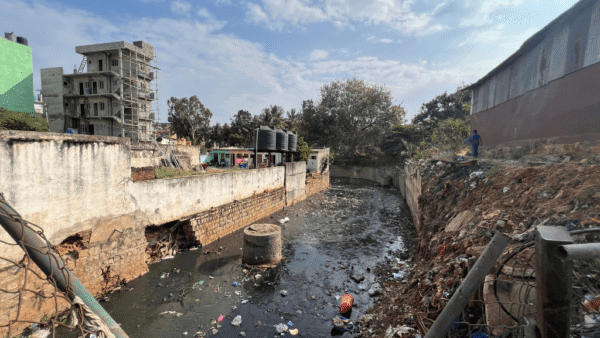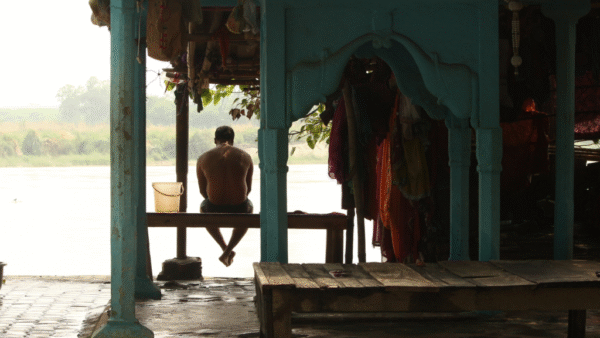We have lost much of the promised land that our cities were meant to be. Cities were to be free, equal, and liberating spaces with opportunity for collectivisation and harnessing social power to influence change towards equality and justice. The city space was an opportunity to move away from oppressive territorial forces that dominate rural life with exclusion, discrimination, subjugation, and poverty. Cities, in contrast, were imagined as democratic spaces; city making was to be an effective means to achieve, in David Harvey’s words, “the perpetual production of urban commons” with a higher quality of life and dignity for all.
Unfortunately, the promised land is a bluff perpetrated by the ruling dispensation and the so-called free market in which city making epitomises exclusion and underdevelopment. In this, a vast number of people are discriminated from the benefits of ‘development,’ often deprived, and displaced in ways that even access to basic health care and education is denied to them.
Cities are increasingly characterised by an unsustainable development pattern – misutilisation of land, exclusionary city planning and a deplorable state of the environment. Governments have turned city making into an engine that propels the colonisation of public assets and ensures rapid turn-over of private profit. Construction and real estate businesses have been effective means, the largest of cities-based business, for achieving this objective.
Governments employ multiple tools of planning to achieve exclusive cities; one of them is a city’s Development Control Regulations (DCR). The regulations, irrespective of the city, bring order to construction and development in ways that turn land, housing, and amenities into tradable commodities, even the commons are not spared from the clutches of commodification. We then witness the rapid downsizing of the public realm – in physical and democratic terms.
The regulations do not spare even natural areas, and allow their capture or destruction to create more land and real estate business opportunities, thus actively contributing to the extreme climate events such as rising temperatures, increased frequency of cyclones, floods, and sea-level rise. The Israeli climatologist Baruch Rinkevich gives us a warning: “…just at the time when all must act together, with dedication, to confront humanity’s ‘ultimate challenge,’ the leaders of the most powerful state in human history, in full awareness of what they are doing, are dedicating themselves with passion to destroying the prospects for organised human life.”
City making as spatial discrimination
There is a larger threat too. As the city making process is increasingly privatised which promotes, nurtures, and reinforces centralisation of power and establishment of autocratic and authoritarian regimes, cities run contrary to the idea of zones of freedom and liberation. “Increasingly, the right to the city is falling into the hands of private or quasi-private interests,” Harvey writes. There is a deliberate attempt to scuttle participation and democracy. Governments actively undermine democratic values. For large sections of working people, citizenship and belonging are threatened, often denied. Cities become divided, fragmented and conflict prone.
There is a thin line between a government’s determination or decisiveness – positioning the state as all pervasive and powerful – and the formation of authoritarian and fascist regimes. This is increasingly experienced in the implementation of various oppressive and class-based discriminatory laws, regulations, plans and projects through coercive means, even through the law. In spatial terms, this is realised in the Slum Redevelopment Scheme rolled out by successive governments in Maharashtra for Mumbai, later followed by other states, in which the land occupied by slums turns valuable because it can be profited from.
Slum dwellers residing on a plot of land are bundled into one-third of it and ware-housed into 25-30 storied buildings – 1,300 tenements or 6,500 persons per hectare — without amenities, open space, light, air, and privacy. The larger portion or two-thirds of the land is appropriated for commercial construction or high-end housing. The implementation of such schemes has seen land traded by a nexus of land sharks, builders, and officials.
This, of course, leads to a life of continued deprivation for slum dwellers; such untenable and unsustainable construction also deepens the human-made Climate Change phenomenon. For governments, people and the environment do not matter. They have debunked social processes influencing the spatial form; instead, it is the market-driven structure of built forms and spaces that deeply influence the social process – way of life, social and cultural practices, and relationships.

Photo: PK Das & Associates
Unpacking Mumbai’s DCR
The current formulation of Mumbai’s DCR – other cities DCRs being no different – including the multiple amendments brought to suit private agencies mandated with development responsibility is an example of skewed, oppressive, authoritarian, and undemocratic governance. This draws our attention to the need for intervention in city planning and development principles, as well as the tools formulated to implement the schemes. Most of Mumbai will see redevelopment as will many cities across India – existing old and dilapidated quarters of the city require reconstruction.
The redevelopment projects in Mumbai are regulated under a single clause, DCR 33, which when followed has led to a market-driven build-more syndrome putting the city on the self-destruct mode. The DCR is an operating tool in city-making, planned with the sole objective of maximising construction and business turnover. It reads concurrently or as supporting document for the city’s Development plan (DP) objectives. However, the current form of DCR and its redevelopment approach led by Floor Space Index (FSI, also known as Floor Area Ratio), has been independent of the DP and has damaged social and environmental terms. The DCR is an isolating transactional model, removed from the existing reality with little or no care for people and the environment, focused on colonisation of public assets and private profit for a few.
The use of the DCR has been on an upward trend since 1991 when the Indian state formally adopted neo-liberalisation; the year also marks a significant turning point in Mumbai’s growth story. The then Sharad Pawar-led government introduced three significant regulations to promote privatisation and market-led development – the redevelopment of cotton textile mills, slums redevelopment, and the Transfer of Development Right (TDR) concept. Together, they had an adverse impact on the course of Mumbai’s spatial structure, particularly its built form. Housing was turned into a tradeable commodity, controlled, and regulated by builders-developers with unregulated sky-rocketing prices making decent houses inaccessible or unaffordable for most people.
In this single-minded money-making and turnover based development model fuelled by the DCR, open spaces were entirely sacrificed, stifling people’s access to light, air, and privacy which adversely affected them. Despite the evidence of rising lung diseases, tuberculosis, stress levels and deteriorating mental health conditions – best described as congestion trauma – governments continued with the forced implementation of DCR-driven schemes. For too long, the adverse impact of ‘densification’ and the deplorable health and environmental consequences on people’s lives have been ignored.
Under the DCR, the density of buildings and people living in an area were pushed to an unsustainable high. It left very little open space, including between buildings. The spaces that existed were concretised for roads and services. There was no space for trees and vegetation, no open grounds for play or to absorb excess rainwater due to which flash floods or water logging disrupted life and caused diseases. These also led to the Urban Heat Island effect – rising temperatures and heat-stress.
Governments no longer hesitate to trade in public property, including open spaces. In what should be considered a criminal act, Mumbai’s municipal corporation has begun trading in open spaces with a rate-card of charges – euphemistically called “premium” – which it levies for sanctioning construction projects with “deficiency of open spaces” that are otherwise required in the DCR. Instead of finding ways to protect and augment open spaces in a city with the lowest ratio of open spaces to population, Maharashtra government and Mumbai’s municipal corporation are severely compromising on people’s right to the city and open spaces.

Photo: Creative Commons
DCR is inherently myopic
The DCR promotes speculative investments and return in housing. In Mumbai, this has resulted in the increase of high-end houses which remain unoccupied – the current estimate is 3,00,000 units – while the shortage in affordable housing is alarmingly high at an estimated 10,00,000 units. This pheomenon has contributed to the real estate prices rising without any relation to the affordability limit of most people, because it suits investors and speculators.
The DCR is essentially an individual plot-based redevelopment approach, taking a myopic view of the city and fragmenting it instead of unifying people and places by breaking down opacity of built form and de-barricading the landscape. Thus, neo-liberalisation policies and privatisation promote fragmentation of people and places – away from collectivisation – through the market-led process of self-gratification and individualisation. City planning and DCR then become reflections of this larger political phenomenon. The redevelopment of slums, reconstruction of cessed and dilapidated buildings, cluster redevelopment, and a host of other redevelopment projects that spatially discriminate in Mumbai can be traced back to the DCR.
In his recent public exhibition of Mumbai’s successive housing schemes since the 1990s, architect Sameep Padora, through superbly illustrated models, drawings and data, established two significant aspects of the city’s development: How the DCR has had massive impact on the built form and how it substantially lowered people’s quality of life and environment, further “slummifying” the city.
Possible interventions for change
A comprehensive and inclusive area or neighbourhood-based participatory planning (people know their neighbourhood best) is the way forward to replace the top-down Master Plan or Town Planning Scheme approach under which land is aggregated and re-distributed among landowners, thereby ignoring the current land-use. City planning ought to be a bottom-up process which considers all existing realities including land occupation patterns as the basis of planning and redevelopment programmes. As a matter of fact, people’s participation in planning ought to be considered an inalienable right, leading to rights-based movements for equality and justice.
Such an approach to city planning will produce a substantively different DCR which defines and regulates the built-form, density, and a sustainable environmental model as the basis of development; not the FSI-based one which ignores the adverse impact of unsustainable high-density living. The FSI is a physical or commodity-oriented tool whereas density-led development regulation would be people-oriented and sociological in character. This can also result in infrastructure equity, land use and environmental equity. Considering an average of five per family, plots with smaller apartments of 300 square feet would have five times the population (100 units would have 500 people) than 1,500 square feet apartments (20 units would have 100 residents) in the same space.
Today, city planning is given the short shrift and the DCR formulation is considered an independent exercise which politicians and bureaucrats find convenient to exercise control and devise quick-fix short-sighted solutions in the interest of the market forces without concern for the emerging spatial order. A paradigm shift from this individual plot-based DCR-centric redevelopment is called for.
Slums redevelopment through comprehensive and all-inclusive plans is a way to liberate a vast number of people from the wretchedness of their lives in slums and dilapidated buildings. Renovating and retrofitting in physical terms, without making significant structural changes in the current physical and social form, cannot be accepted as a long-term measure. And it can no longer form the central idea of redevelopment.
Struggle against slum redevelopment
Four decades of struggle by slum dwellers in Mumbai against forced evictions and demand for basic services, accepted by successive governments and introduced in many avatars, have yielded little improvement of the quality of life, environment, and infrastructure in slums and cessed and dilapidated buildings redevelopment projects. Slums continue to be examples of mafia rule that regulate land allocation and the availability of services; these settlements are also examples of subjugation, exploitation, inequality, and sub-human living conditions. To romanticise these forced colonies of misery or laud “the enterprise of the slumdwellers” is to support the ugly and oppressive regimes that produce such housing through planning.
In a historical battle in 1986 against the demolition of the Sanjay Gandhi Nagar slum in Mumbai’s Nariman Point, led by Gurbir Singh and Nivara Hakk when Shabana Azmi, Anand Patwardhan, Anna Kurien along with two slum dwellers representatives Bhaskar Kunj and Gurubai Kohli held a fast-unto-death protest, the state government was forced to provide alternate land on ownership basis in the suburb of Goregaon for rehabilitation. Through a participatory process, a layout plan and self-help housing scheme were prepared by this writer. Each family was allotted, through lottery, an equal size independent plot with the freedom to build as per their needs and finances. Common amenities were to be managed by an elected committee. It was a wonderful example of democratisation of the affordable housing process.
After peaceful and settled community life for more than three decades, residents decided to adopt the market-oriented Slums Redevelopment Authority (SRA) route in 2010, giving up their land ownership for apartments in multi-storied high-rises developed by a private builder. Getting free houses under the SRA scheme was not the main attraction but owning an apartment – modelled as the ideal city housing for middle and upper classes – was their aspiration, a symbol of self-achievement and a liberating future of their children.
This phenomenon involved people who had unitedly waged a protracted struggle for housing rights, understood the strength of collective force and achieved success, but who backtracked on the ideals of the democratic process and surrendered to market forces. This is not an isolated example; it is representative of the aspirations of vast sections of people in slums, and therefore cannot be ignored. The current SRA model is a terrible version of slums redevelopment and must be abandoned; the construction of a new order of spaces and buildings through the participatory process is a way to challenge the prevailing political, social, and environmental order.

Photo: PK Das & Associates
Planning and DCR as democratic tools
The redevelopment process provides opportunities for people to come together and organise movements towards the democratisation of housing and the city. The alternatives can be liberating, reflecting the aspirations of the marginalised and the struggling people, including their integration with the city. An inclusive planning and design approach is an incredible democratic tool of political, social, and environmental change.
This necessitates reservation in the Development Plan (DP) of slums-occupied land exclusively for affordable housing and not make it open to trading. Such reservation will enable the production of affordable housing, also required for in-growth demand. Both city planning and DCR formulation are not mere technical matters. In essence, they are political in nature, in recent times driven by the privatisation and colonisation of public assets, and lead to certain restrictive forms of re-development and spatial forms.
Under the current authoritarian, undemocratic, privatised political environment, with the objective of breaking down communes, collectives and the commons, governments have consciously given up planning for cities and resorted to tools such as the DCR. In fact, inclusive planning and development guidelines are considered hindrances to the free market. This is unsustainable for both people and the environment.
To develop sustainable cities, governments must get back to its primary responsibility of planning for the city through a democratic and participatory neighbourhood-based bottom-up approach (people know best about their area) which incorporates the principles of nature-led planning. Sustainable urbanisation and reinventing the city in the current challenge of increasing Climate catastrophes will have to form the basis of political action by people’s movements. Despite the space for such movements shrinking under present regime, it is the only alternative way to build equal and just cities.
PK Das is an urban planner, architect and activist with more than four decades of experience. He has been working to establish a close relationship between his discipline, urban ecology and people through a participatory planning process. He was awarded, among other honours, the prestigious Jane Jacobs International Medal in 2016 for his work in revitalising open spaces in Mumbai, rehabilitating slums and initiating participatory planning process.
Cover photo: Creative Commons




